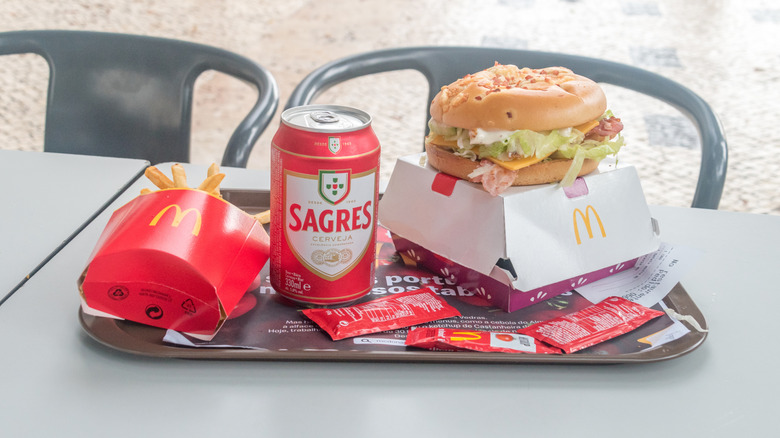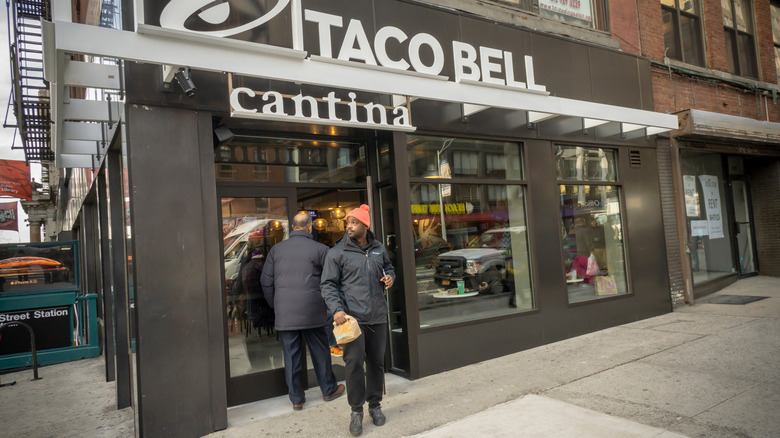Why Don't More Fast Food Restaurants Serve Alcohol?
Imagine ordering a Big Mac Combo Meal and a cold one — what could be better? In Germany, France, Spain, and others, this is an everyday reality. For those of us in the U.S., though, fast food restaurants rarely serve alcohol, and there are several reasons why.
While some chains, especially internationally or in specific locations, have experimented with beer and wine, it remains relatively uncommon. Legal and regulatory challenges are obviously the biggest hurdle, but there's also liability concerns and the brand's reputation to consider. Liquor laws are infamous for being incredibly complicated, and they vary widely by state and country, requiring most restaurants and bars to obtain costly and restrictive alcohol licenses. Besides finding real estate that's a certain distance from, say, churches and schools, businesses must also comply with super-strict regulations like age verification, serving limits, and liability for drunk customers.
Fast food is designed for quick service, and alcohol can slow things down. Serving a cold beer or a glass of Cabernet requires additional training and safety protocols, which interferes with the very efficiency that makes fast food so damn appealing. Moreover, around 30% of fast food workers are under 21, which in some states means they can't serve or bartend on premises. Plus, there's the simple truth that drive-thrus and alcohol are not always the best combination. It's obvious that fast-food restaurants rely heavily on drive-thru sales, so selling rum alongside your Wendy's Frosty creates a gray area that's ripe for legal liabilities and safety concerns.
Who does serve alcohol?
When it comes to brand reputation, fast-food chains have spent millions and decades on cultivating a family-friendly atmosphere. Serving alcohol might alienate parents who prefer a kid-friendly dining experience, especially in chains like McDonald's, Chick-fil-A, and In-N-Out burger, that have marketed their venues as safe, wholesome places. Let's also not forget that if a customer gets intoxicated on too many Taco Bell margaritas and causes harm (like a DUI-related accident), the restaurant could be held legally responsible. But on a more light-hearted note, there's certainly some chains out there that are up for the challenge of serving some hooch to their age-appropriate customers.
In 2015, the Taco Bell Cantina was launched, offering a trendier alternative for those who live in high-traffic, urban environments and large cities. Besides an open kitchen concept and new, premium ingredients, it offered three kinds of booze. Besides serving the usual beer, wine, and sangria, their signature freezes are available to be mixed with tequila, rum, or vodka. Chipotle, on the other hand, has been serving beer and margaritas at select locations since it first opened in Denver, Colorado, in 1993. Most Shake Shacks offer artisanal beer and wine to appeal to a more upscale, mature dining crowd. So while liquor in fast food restaurants isn't completely out of the question, the combination of legal restrictions, liability concerns, and branding challenges will no doubt keep most drive-thrus in North America a booze-free zone.

